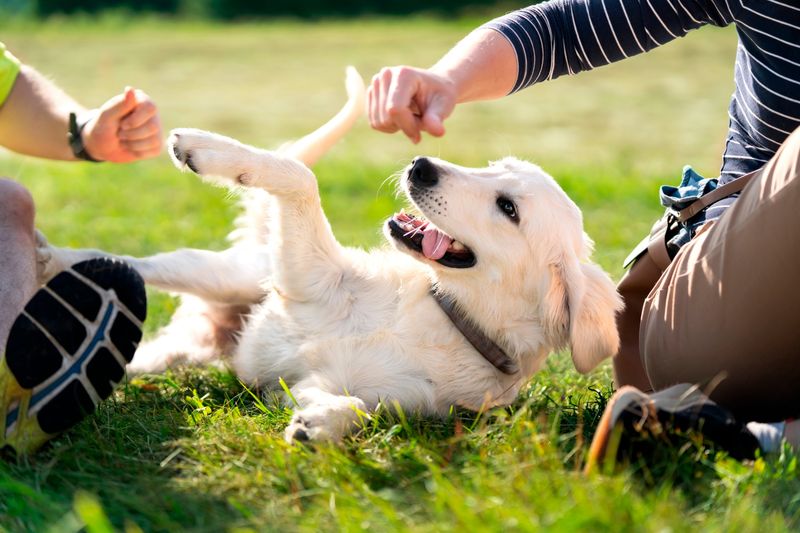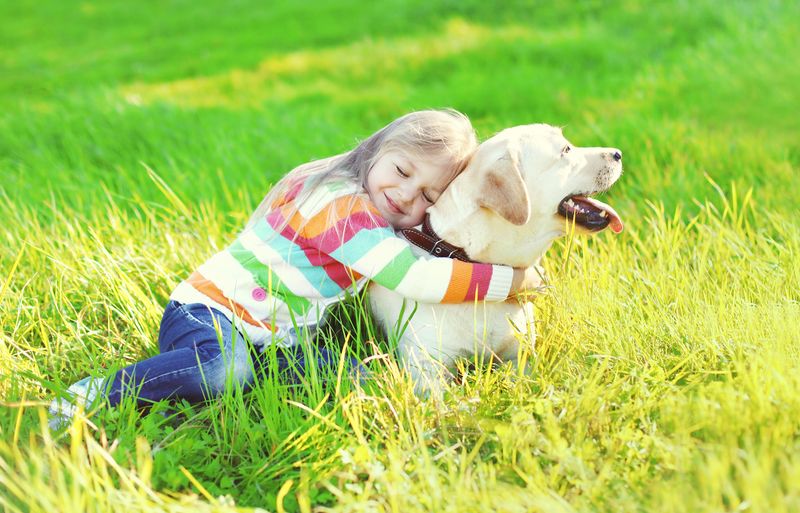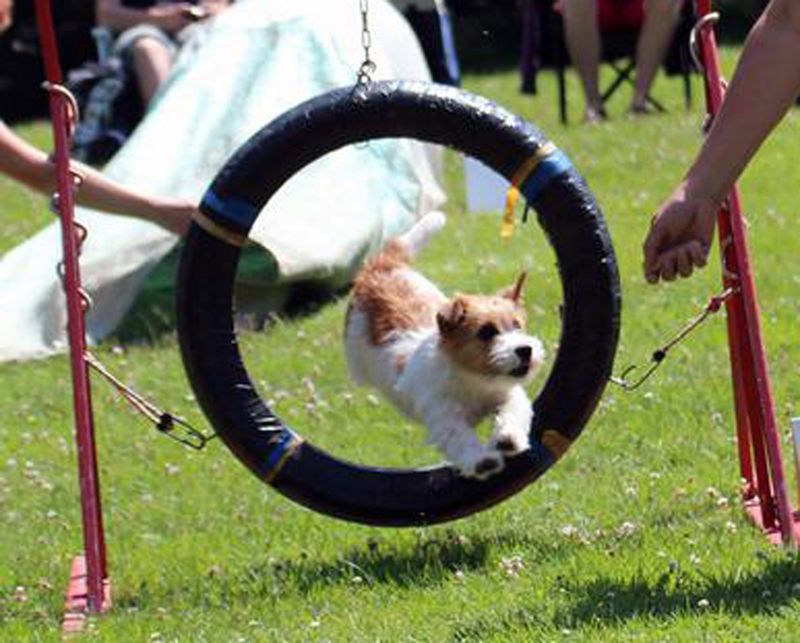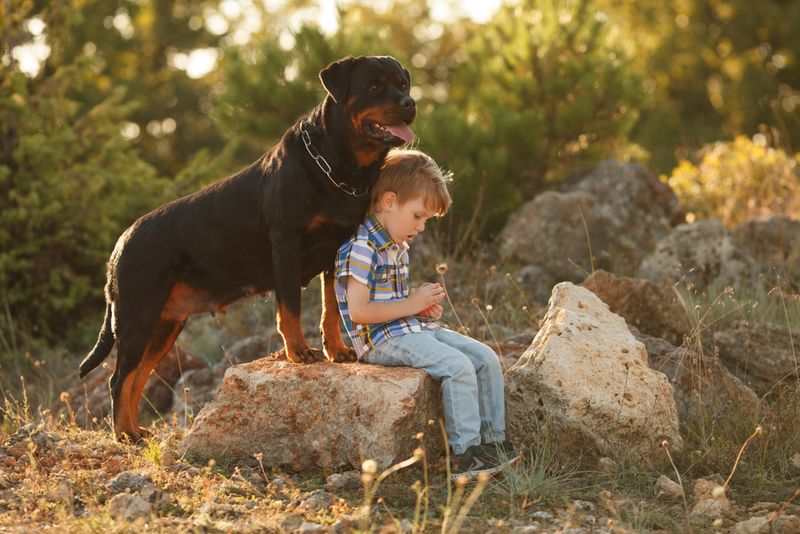Dogs, our beloved furry companions, are more than just pets—they’re family. Yet, while providing for their physical needs, we often overlook their emotional well-being. Just like humans, dogs have intricate emotional landscapes that require attention and care. These emotional needs, when met, can lead to a happier and healthier life for your canine friend. Here, we delve into 17 hidden emotional needs of dogs that you might be missing. Understanding and addressing these needs not only strengthens the bond between you and your dog but also enriches their life in profound ways.
Attention and Interaction
Imagine the joy in a Golden Retriever’s eyes as it bounds across a sunlit park, gripping its favorite ball. Dogs, social creatures at heart, thrive on interaction and attention, much like humans. Engaging them in activities like fetch or a simple belly rub can work wonders.
Without adequate interaction, dogs might resort to destructive behaviors. Their need for companionship is profound; they see you as their pack. Ever noticed your dog following you around the house? It’s not just loyalty; it’s an emotional need for closeness.
Meeting this need creates an unbreakable bond.
Routine and Consistency
Picture a Cocker Spaniel eagerly waiting by the clock. Dogs are creatures of habit, and a consistent routine provides them with a sense of security. Regular meal times, walks, and play sessions help them anticipate what’s next, reducing anxiety.
Without routine, a dog can become confused or stressed, much like when humans face unpredictable changes. An established schedule reassures them that their needs will be met.
This consistency in their day-to-day life instills a calm demeanor and helps them thrive emotionally and physically.
Mental Stimulation
With intelligence akin to a toddler, the Border Collie thrives on mental challenges. Dogs need mental stimulation to keep their minds sharp and engaged. Puzzle toys, training new tricks, or interactive games can fulfill this need.
Without mental stimulation, dogs can become bored, potentially leading to destructive behavior. Engaging their brains is as crucial as physical exercise.
Providing opportunities for mental engagement not only enriches their lives but also strengthens the bond between you and your furry friend, keeping them happy and healthy.
Comfort and Security
An Old English Sheepdog wrapped snugly in a blanket showcases a dog’s yearning for comfort and security. Dogs, much like us, desire a safe haven where they can relax.
Providing a dedicated space with their favorite bedding or blanket offers them a sense of security. This simple gesture ensures they have a place to unwind and feel protected.
A secure environment fosters trust and reduces anxiety, making your dog feel cherished and at ease in their home.
Socialization Opportunities
Consider a Poodle at a bustling dog park, greeting new friends with a wagging tail. Dogs are inherently social and benefit from interaction with other dogs and people.
Socialization helps them understand the world around them, reducing fear and anxiety. Regular visits to dog parks or playdates can provide these valuable experiences.
Without socialization, dogs can become fearful or aggressive. Exposing them to diverse environments and companions nurtures their emotional growth and confidence.
Affection and Love
A Labrador Retriever basking in the embrace of a young girl is a testament to a dog’s need for affection and love. Dogs thrive on positive reinforcement, cuddles, and gentle strokes.
This affection reassures them of their importance in your life, bolstering their self-esteem. Love and attention from their human companions create a deep emotional bond.
Neglecting this need can lead to feelings of insecurity. A loving touch or word can significantly impact your dog’s emotional well-being, ensuring they feel valued and cherished.
Understanding and Patience
Envision a Beagle with its head cocked in curiosity, learning from patient guidance. Dogs require understanding and patience from their humans, especially during training or mishaps.
Mistakes are a part of learning, and your calm approach helps them grow and adapt. Harsh reprimands can lead to fear and stress, hindering their emotional development.
Your patience conveys love and trust, encouraging your dog to learn from experiences and become a well-adjusted member of the family.
Exercise and Playtime
Imagine a Jack Russell Terrier leaping through hoops with boundless energy. Exercise and playtime are vital for a dog’s physical and emotional health. Activities like fetch, agility training, or simple walks stimulate their body and mind.
Regular exercise prevents boredom and curtails behavioral issues. It also provides an outlet for pent-up energy, fostering a content and relaxed dog.
Playtime strengthens the bond between you and your pet, offering moments of joy and connection.
Freedom to Explore
A Dachshund, nose to the ground on a mountain trail, captures the essence of exploration. Dogs have an innate curiosity and a desire to explore their surroundings.
Allowing them safe spaces to roam and sniff satisfies this need, providing mental stimulation. Exploration is not just physical; it’s a sensory adventure that enriches their lives.
Confinement can lead to frustration. Giving them the freedom to explore keeps their spirits high and minds sharp.
Healthy Diet and Treats
Picture a Bulldog, eyes wide with anticipation, awaiting a wholesome meal. A healthy diet is crucial for your dog’s emotional well-being, as it affects mood and energy levels.
Balanced meals provide essential nutrients that keep them active and happy. Occasional treats reinforce positive behavior and are a source of joy.
Poor nutrition may lead to lethargy and mood swings. A diet tailored to their needs ensures they thrive both physically and emotionally.
Respect for Their Space
Visualize a Shiba Inu enjoying quiet solitude in its cozy corner. Dogs, like humans, value personal space to relax and recharge.
Respecting their boundaries shows understanding and empathy for their needs. A designated area where they can retreat offers them peace and solitude.
Intrusion can lead to stress or anxiety. Allowing them this retreat supports their emotional balance and sense of security.
Understanding Body Language
A German Shepherd, with its expressive eyes and ears, communicates volumes. Understanding a dog’s body language is key to meeting their emotional needs.
Subtle cues like wagging tails or flattened ears indicate their feelings. Recognizing these signs helps you respond appropriately, ensuring they feel understood and cared for.
Misinterpretation can lead to frustration. By learning their language, you forge a deeper connection and address their needs effectively.
Trust and Loyalty
A Rottweiler, steadfast beside its owner, radiates loyalty and trust. Dogs need to feel secure in their relationship with their humans.
Building trust requires consistency and reliability. A trustworthy bond alleviates anxiety and cultivates loyalty.
Betrayal of this trust can lead to fear or aggression. Upholding this bond fosters a harmonious and fulfilling relationship.
Purposeful Tasks
A Siberian Husky, pulling a sled through the snow, exemplifies a dog’s need for purpose. Tasks or jobs provide them with a sense of fulfillment.
Whether herding, retrieving, or simple commands, purposeful activities engage their instincts and enhance their confidence.
Without a sense of purpose, dogs may become listless. Providing meaningful tasks keeps them motivated and content.
Positive Reinforcement
A Border Terrier eagerly performing a trick for a treat showcases the power of positive reinforcement. Reward-based training builds confidence and strengthens behavioral patterns.
Positive signals affirm good behavior, encouraging repetition. It creates a nurturing environment where learning is fun and rewarding.
Negative reinforcement can damage trust. Emphasizing positive rewards fosters a happier, more obedient companion.
Quiet and Calm Environment
Imagine a Basset Hound lounging in a serene garden, soaking up the tranquility. Dogs appreciate calm environments where they can relax without disturbance.
Noise or chaos can be stress-inducing, leading to anxiety. A peaceful setting allows them to unwind and recharge.
Creating a calm atmosphere promotes emotional stability and contentment.
Understanding Their Past
A rescue dog, eyes reflecting a myriad of past emotions, embodies the need for empathy. Understanding a dog’s history is crucial, especially for those with a challenging past.
Patience and compassion in dealing with their emotional scars can lead to healing. Acknowledging their journey influences their current behavior and needs.
Ignoring their past can hinder trust-building. By honoring their history, you pave the way for a loving and supportive relationship.

















